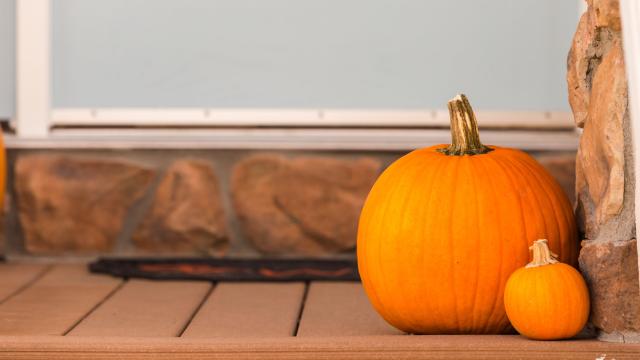There has been a lot of social media controversy recently over a method of making pumpkins last longer — by wiping them down with bleach diluted in water. While it would be unwise to use unadulterated bleach because of its drying properties on the pumpkin and potential effect on surrounding soil or surfaces, a teaspoon of bleach mixed with a gallon of water won’t be toxic to animals once it’s dry, as many detractors claim.
Bleach is toxic when it’s wet, safe when dry
Wiping pumpkins with diluted bleach works because it kills the bacteria on the surface of the pumpkin, slowing down its decomposition process. It also helps to discourage mould from growing, prolonging the shelf-life of a harvested pumpkin. If you do get some salt residue on the surface of your pumpkin, you can use a clean, damp cloth to wipe away the salt crystals.
Bleach, known by its chemical name as NaClO, is toxic in its liquid form, but once it dries, the leftover residue becomes a harmless salt (NaCl). If bleach residue were as toxic as some people fear, think of how dangerous it would be to clean your countertops or your bathroom sink with it. While bleach can be dangerous if not used properly, its residue won’t kill wildlife any more than table salt would.
Dangers associated with bleach
If a large amount of bleach is absorbed into soil, it can lead to higher salinity, resulting in the withering of many plant species, so it’s not a good idea to pour or mix bleach on the ground. Some people even use bleach as a weed killer, but it’s non-specific, meaning that it will kill any plants it comes in contact with. If you do spill some by accident, flush the area with lots of fresh water to avoid creating a problem for local flora.
In addition, not diluting bleach or using it in an enclosed environment can cause toxic fumes that are dangerous to humans and pets. It should go without saying that you shouldn’t drink bleach, even in its diluted form, because it’s still poisonous as a liquid. However, using a one teaspoon to one gallon ratio of bleach mixed with fresh water should be relatively safe to use on your pumpkin, as long as you don’t get it in your eyes or mouth. (It’s also a good idea to wear gloves while using bleach to keep your hands from drying out.) If you do get bleach on your skin, rinse the area thoroughly with fresh water. When mixing bleach, if you aren’t sure of the ratio you are using, follow the CDC guidelines for safe disinfecting practices.
Never mix bleach with ammonia
A major danger posed by using bleach is the possibility of accidentally mixing it with ammonia, which can create deadly fumes and acid. Don’t mix bleach with other cleaning products ever, and if you do accidentally mix the two, leave the area where it occurred immediately. Seek medical attention after you have inhaled the fumes caused by mixing bleach and ammonia together because the fumes from such an accident can kill you or damage your eyes and mucus membranes.
If you do accidentally ingest bleach or get it in your eye, contact your local poison control or dial 000 for any severe symptoms.

Leave a Reply
You must be logged in to post a comment.